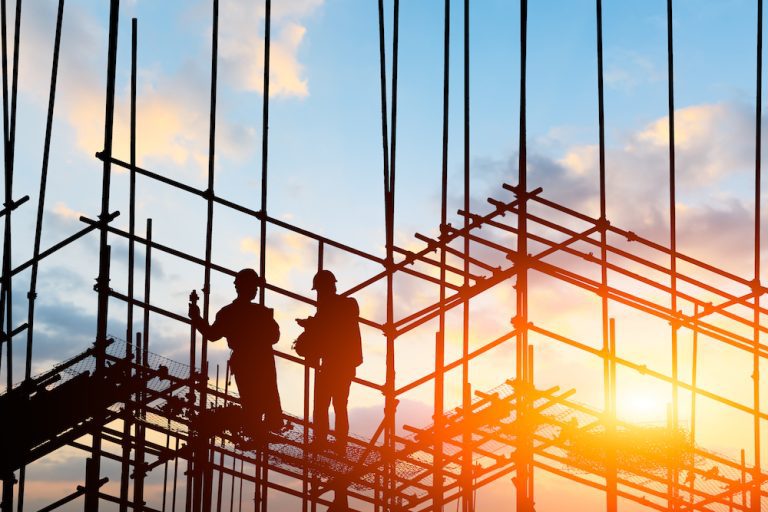Designing and building an eco-friendly home improves the environment while saving energy, water, and noise. But you also save on maintenance and other costs associated with running your home. Sustainable home building can reduce waste, improve energy efficiency, and reduce water utilization throughout the lifetime of the home. Additionally, building with a long-term mindset will extend the house’s lifespan. Durable, quality construction materials and green features will ensure that your sustainable home is built to last. Considerations For A Sustainable Design And Building A sustainable home should have a positive physical and psychological impact on its inhabitants while having the least negative impact on the environment. When planning and building a sustainable home, there are some things to consider, including residential renewable energy solutions, minimizing energy use, avoiding environmental toxins, and using raw materials and resources responsibly. The planning stages of new construction should consider features such as location, size, and orientation. To minimize a home’s carbon footprint, a building’s location must be close to public transportation, shopping, recreation, and schools. It must also be level with unobstructed sunlight. Sustainable housing enhances the quality of life, reduces the impact on the environment, requires less maintenance regarding sustainable materials, and is built with non-toxic materials. Here are some things to take note of in the planning and building of an eco-friendly home: 1. Orientation The orientation of the building should optimize passive heating and cooling as well as the production of solar energy and for maximum sun exposure. Specifically, a northern roof orientation is ideal for solar panels. In cold climates, draft-free, double-glazed windows are the best choice. In contrast, triple-glazed windows and insulated frames with no gaps are best for warmer temperatures in using new technologies such as double glazing, special coatings, and non-conductive frames as you build a sustainable home. A thermally-passive design, which incorporates insulation and orientation, is essential for energy-efficient homes. You should consider the site condition and orientation before designing your house. Choose an area that inspires you and meets your privacy, lighting, air, and water needs. Align your house along the east-west axis with north or south-facing windows. 2. Reusing Materials In this day and age, it makes sense to reduce the number of purchased materials when you can get reclaimed ones that are still in good condition. In addition, most materials such as reclaimed wood can be decked out using environmentally-friendly decorating ideas to look fresh and new. Also, reusing will save you the money, time, and energy necessary to produce a new product. 3. Energy-Efficient Appliances Consider purchasing energy-efficient appliances such as ovens, refrigerators, and dishwashers when you have a budget for new appliances. Check for Energy Star logos on each device for detailed information about its energy efficiency. Talk to your energy supplier about renewable energy solutions. Rooftop solar panels could have enormous benefits for your home and lifestyle. Your home could entirely or partially operate off clean, renewable energy, which is positive for the planet and your power bill. 4. Eco-Friendly Materials In contrast, conventional and ordinary building materials have a substantial impact on people’s health and the environment. On the other hand, eco-friendly materials are in tune with the environment and don’t harm the ecosystem. What type of materials are you considering for your new house? Choose those that can absorb solar heat such as sand, cement, and lime bricks. These are fire-resistant and scarcely absorb water. You can use other alternative building materials such as rammed earth, green concrete, plastic bricks, bamboo, rice husk ash concrete, timbercrete, straw bales, sheep’s wool insulation, and reclaimed or recycled metal. 5. Smart Meters Putting a smart meter in your home can ensure that you save energy by automating tasks such as turning off your appliances at specific times. In addition, smart meters can connect to your devices and control them, allowing you to conserve energy. The most immediate benefit of smart meters is that the consumers won’t receive any erroneous electrical bills. In addition, smart meters will help reduce energy usage and the amount of carbon dioxide emitted into the atmosphere. A green product, therefore, is the outcome of its installation. 6. Solar Power Installing solar panels on your roof is the best way to ensure you get enough energy and reduce your heating bills. They protect from fires and short circuits while lowering your heating bills. If you haven’t set up solar panels yet, do so when building your roof. A significant portion of solar energy’s appeal is its many benefits, including decreased greenhouse gas emissions and increased home value. In addition, solar energy is one of the most accessible forms of renewable energy currently available. 7. Living Walls Living walls such as virtual gardens can be attached to the interior or exterior walls. Some vertical gardens are extensive greenery displays while others are potted plants mounted to the wall vertically. A living wall can appear in any shape or size and enhance the aesthetics of any home or office. Having a living house combines the harmony of nature with human comfort. Grass-covered walls and vegetation-covered roofs keep the air clean and fresh, and vegetation cools the entire building in the heat of summer. A vertical garden or green wall can provide a lot of natural beauty and offer some surprising health benefits. Plants act as natural air purifiers, filtering pollution and chemicals from the air and metabolizing them to release new oxygen. As a result, you’ll breathe fresh, clean air that’s refreshing and relaxing after installing a green wall. Conclusion Sustainable design elements are easy to incorporate into your new build and can put you on the path to living a greener lifestyle. A common misconception is that greener homes are also more costly to run and maintain. On the contrary, eco-friendly houses benefit the environment and your finances, which applies to both the construction process and the future. With the popularity of green homes growing rapidly, designing and building an eco-friendly home has never been easier. You can












